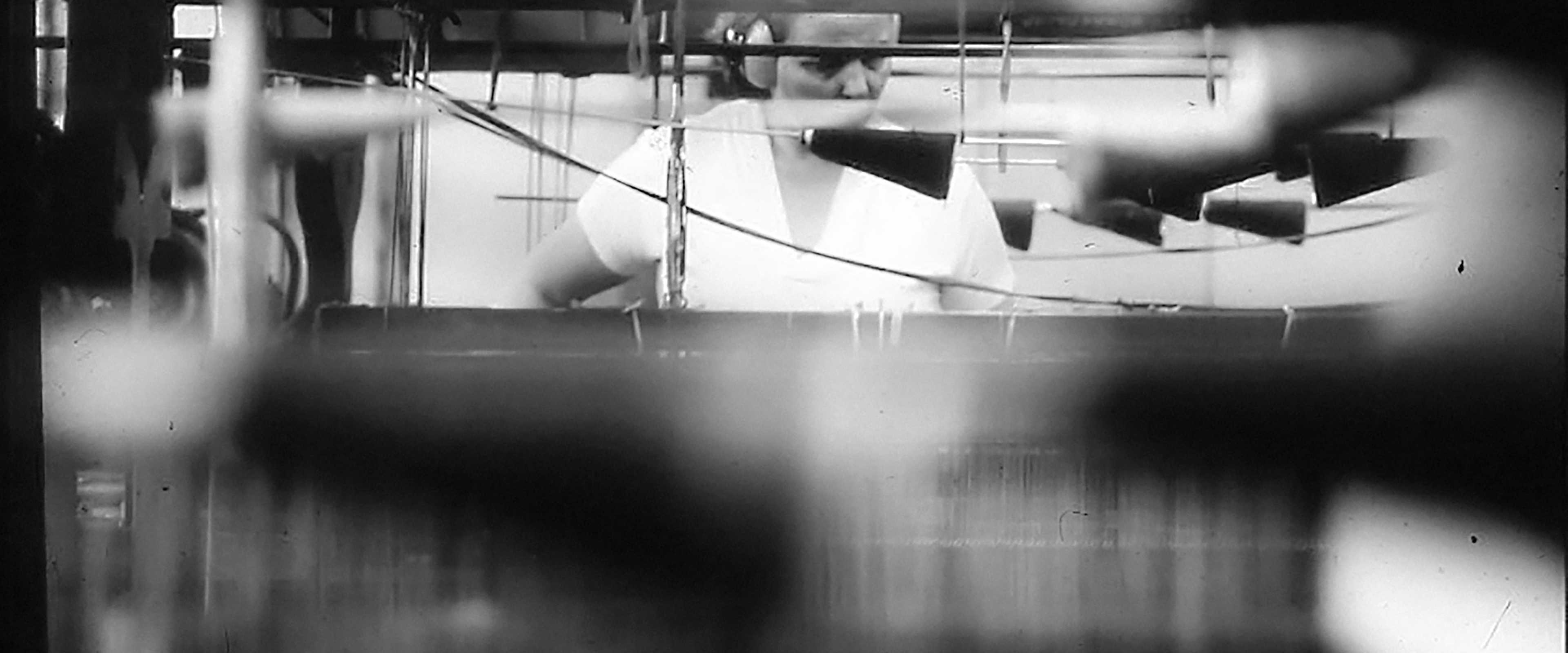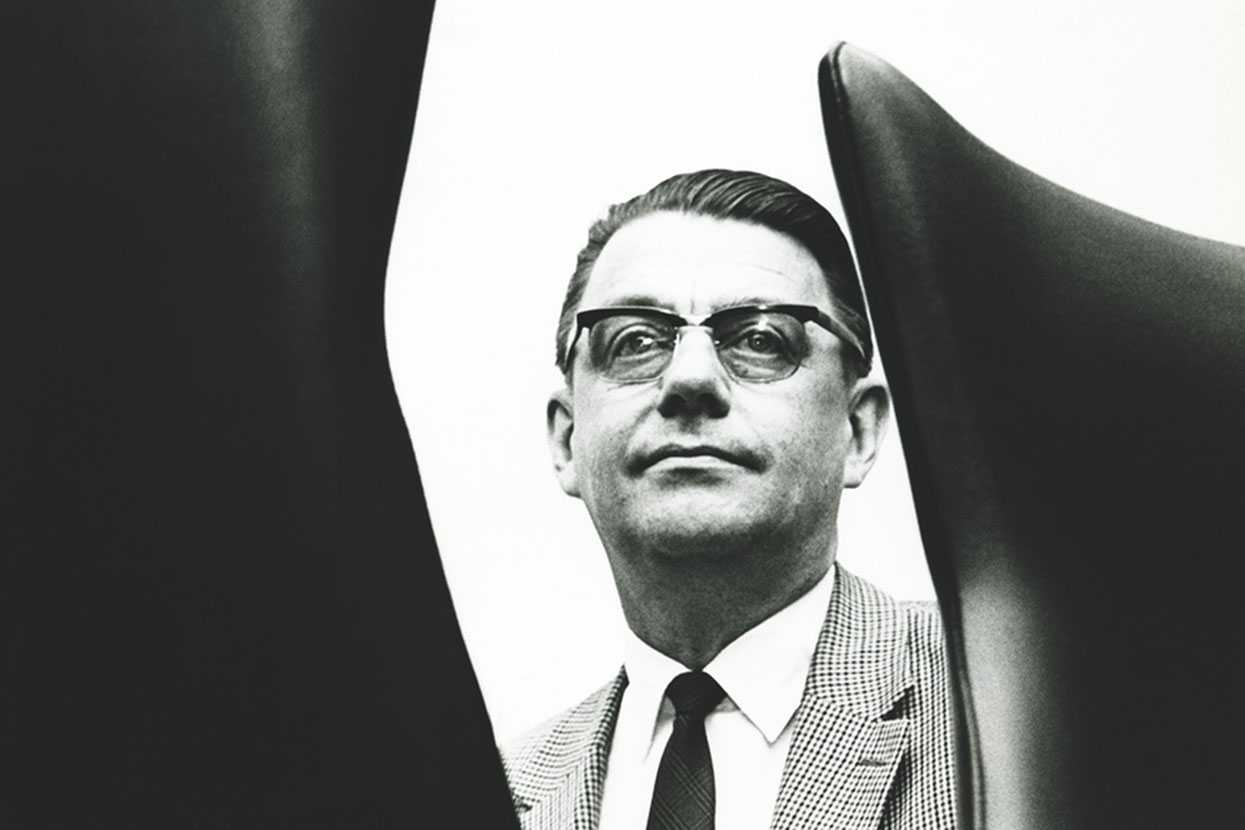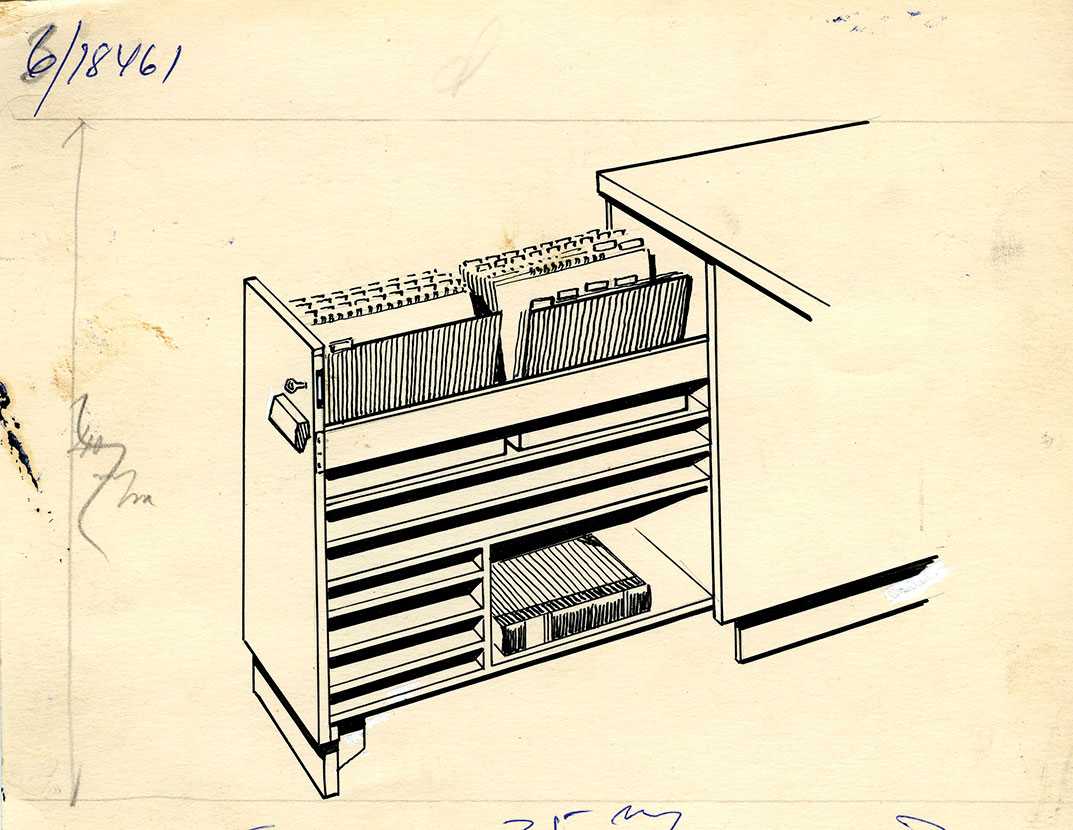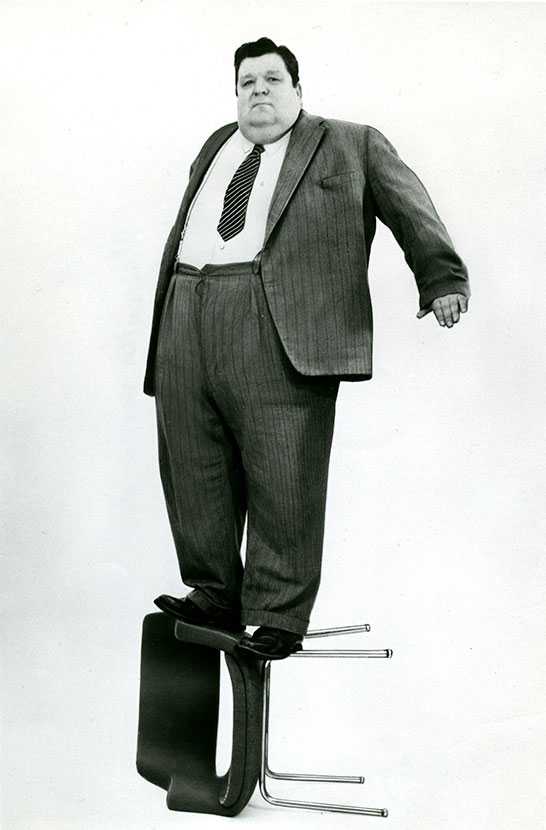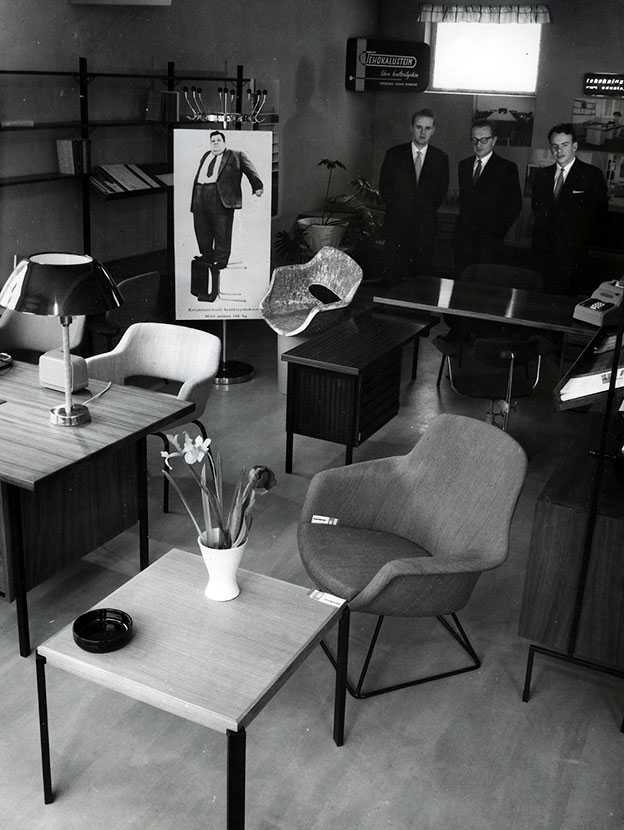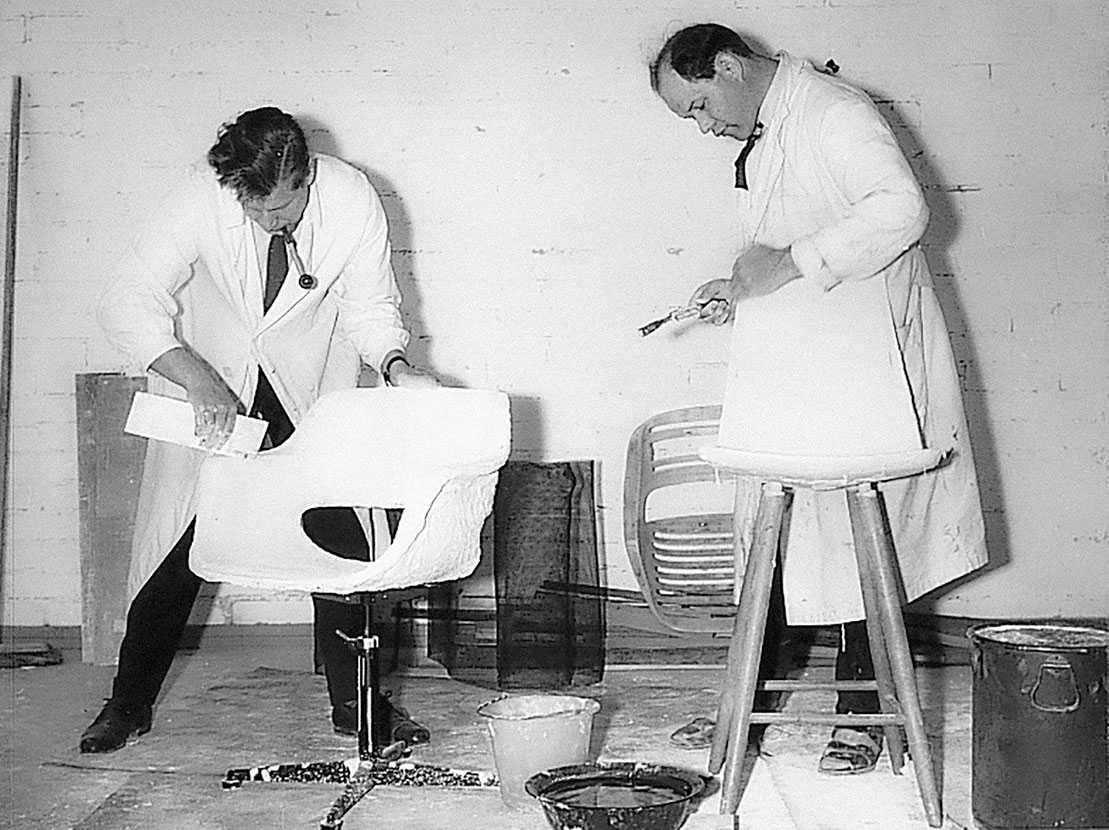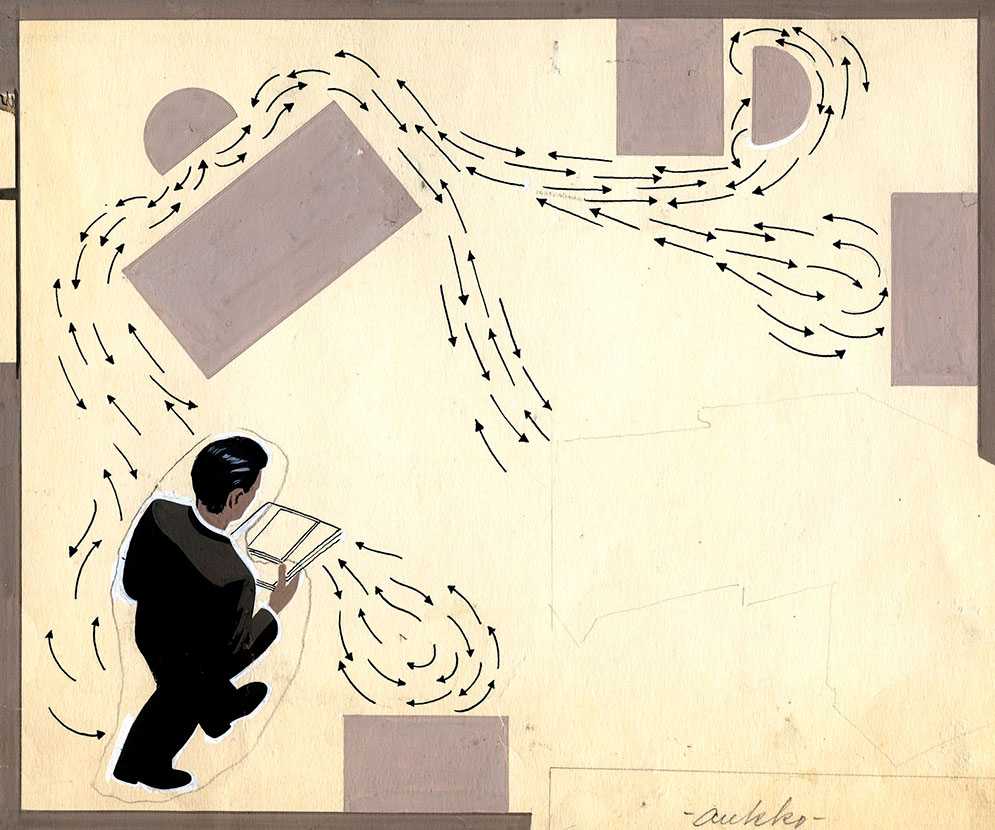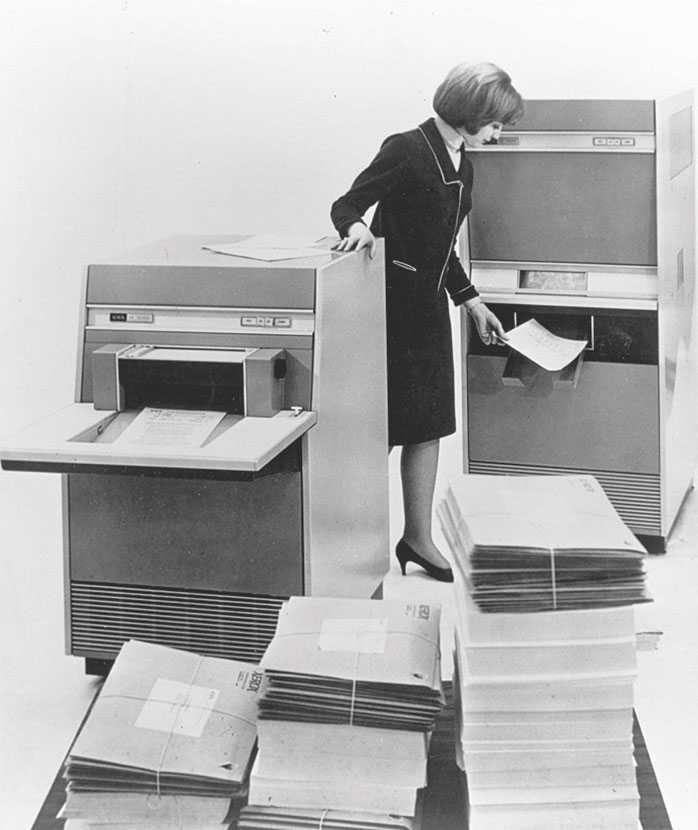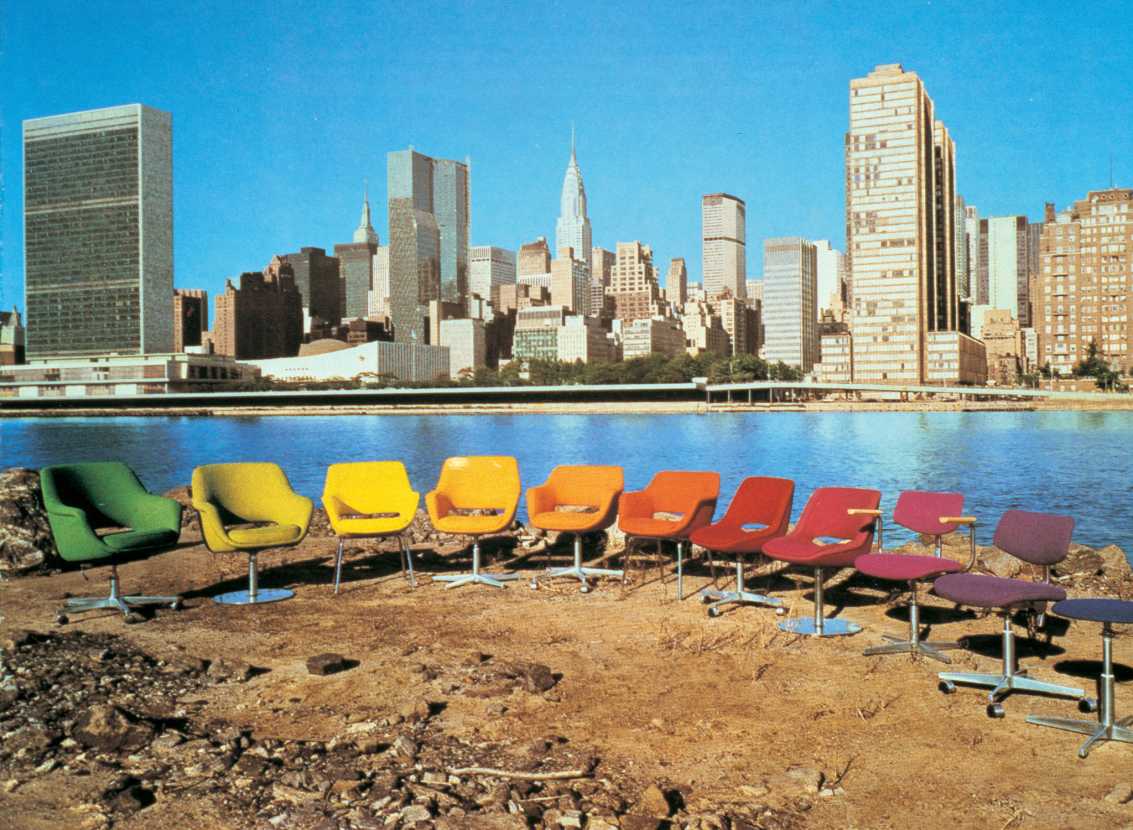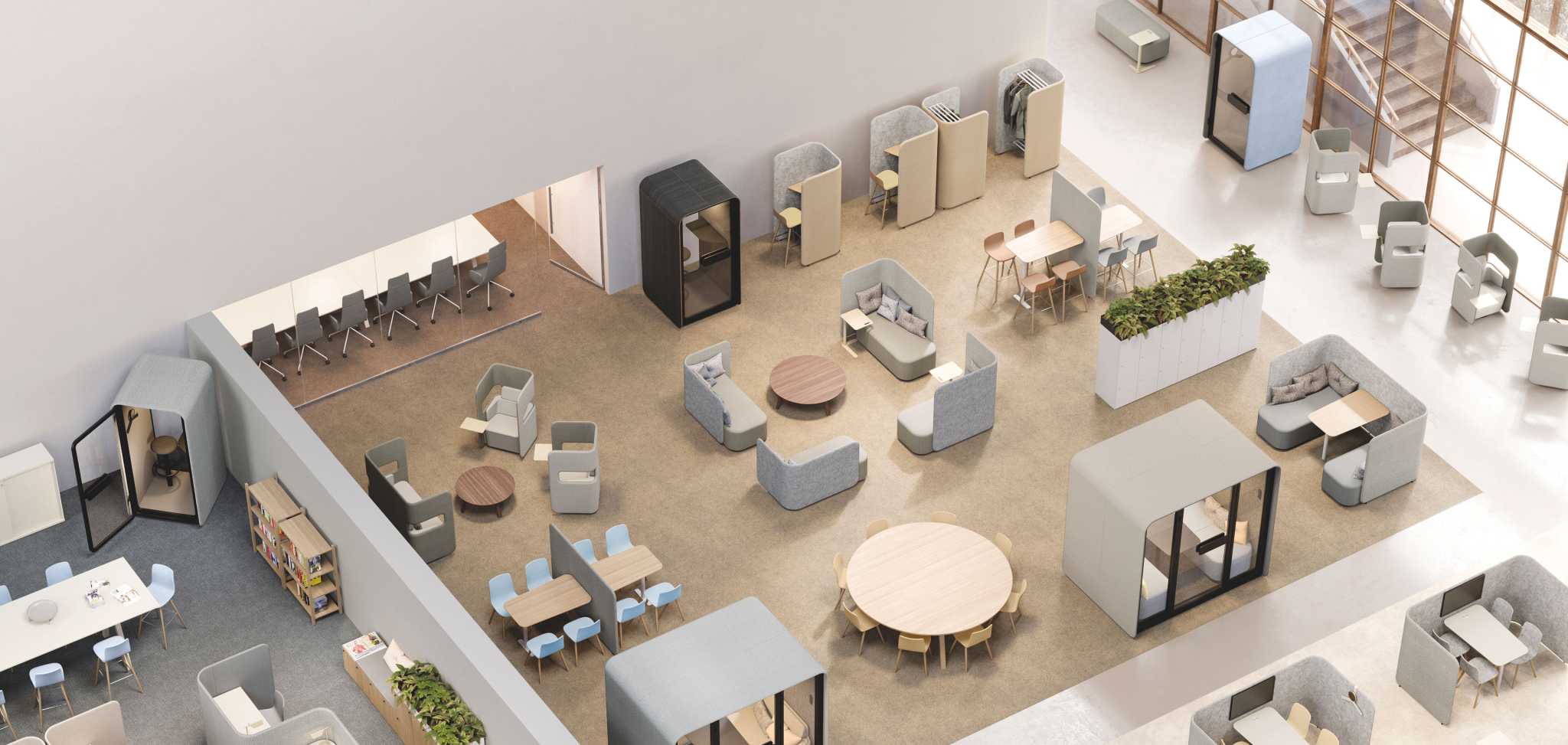In 1942, Finnish offices were facing changes.
Finland was one of the first European countries to adopt the DIN paper format, which also included the A4 sheet. This had an immediate effect on office furniture: there was a lot of paper, and the furniture had match the paper sizes.
At the same time, Finland was also suffering form a shortage of materials as a consequence of the wars. Matti S. Martela (1913–1987), who was working in the wood processing business he had founded, realised that industrial manufacturing was the only way to meet the needs of new furniture in an efficient way. He came up with a business that would manufacture sensibly designed office furniture according to the new regulations.
Tehokaluste Oy, later to be known as Martela, began operations in 1945. Matti S. Martela was joined by fellow co-founders Unto Eskola, Jonne Jahnukainen, Svante Nurmiranta, Wladimir Rumjantsew and Henrik Virkkunen.
The first major customer of the new company was the Finnish Government, which began by placing an order for fifty desks designed by interior architect Rumjantsew. Before the company even had time to fulfil the order, they had already received an additional order for another fifty desks. This provided a great start for the new business.
